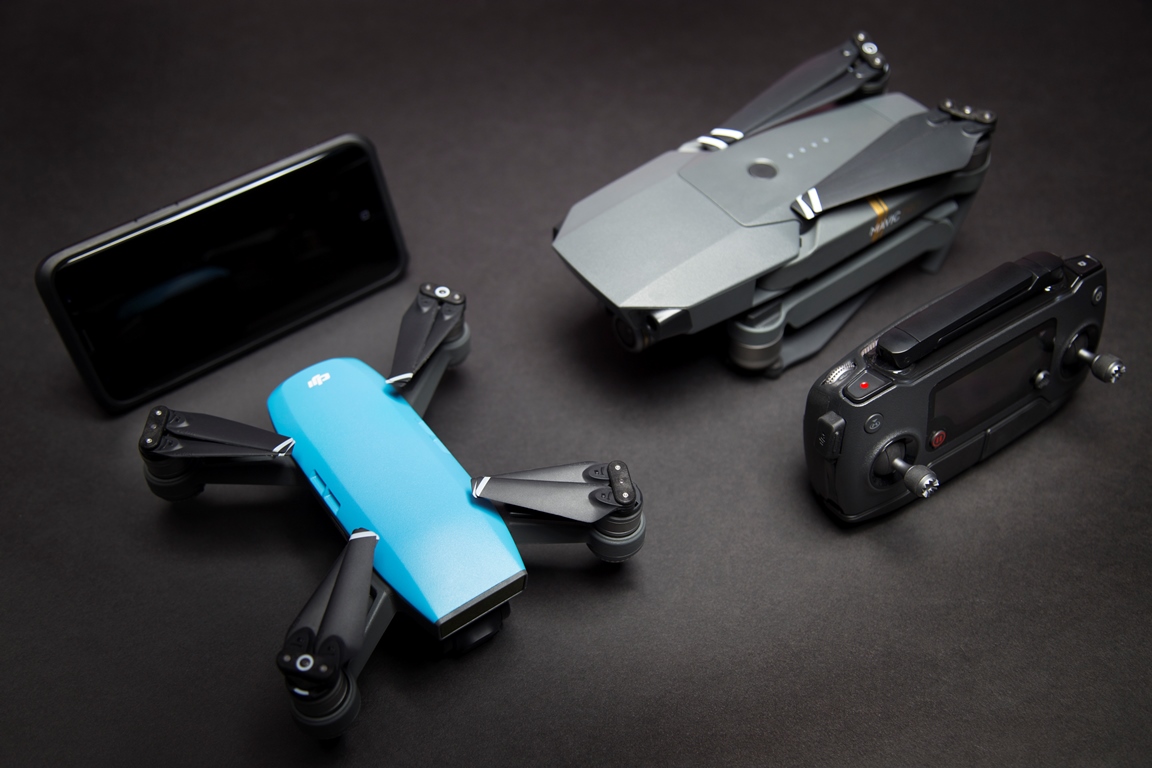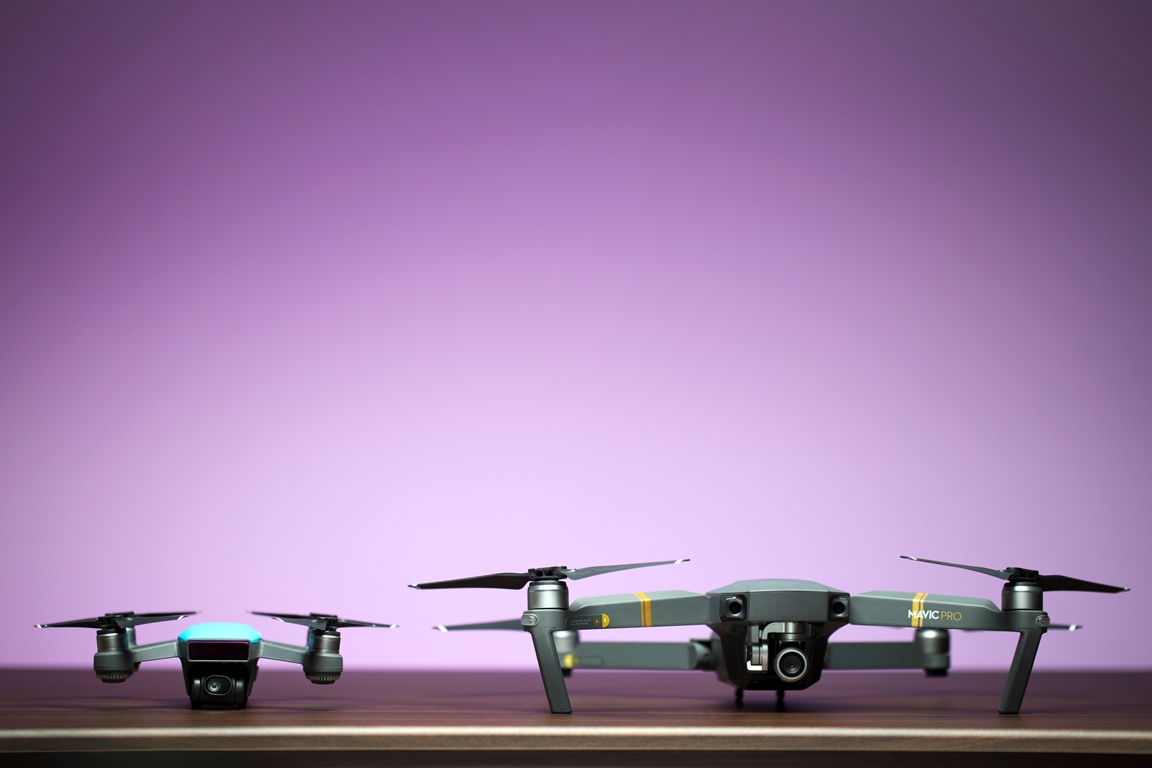

Now a little over a month after the release of the DJI Spark, I’ve had a little time to get past my first impressions with our pre-production model and take a deeper dive into the compact drone. Undoubtedly DJI has done some interesting things with the release of their newest quadcopter, but even the most innovative new features are playing in the shadow of the Spark’s bigger brother released just last year, the Mavic.
While there are certainly more adept professional-grade drones on the market, the Mavic blends usability and quality in a way which make it unique. Since it redefined what a consumer photography drone can be, the question everyone has been asking since the Spark release has been: “Which is better, the Spark or the Mavic?”
How small is it really?
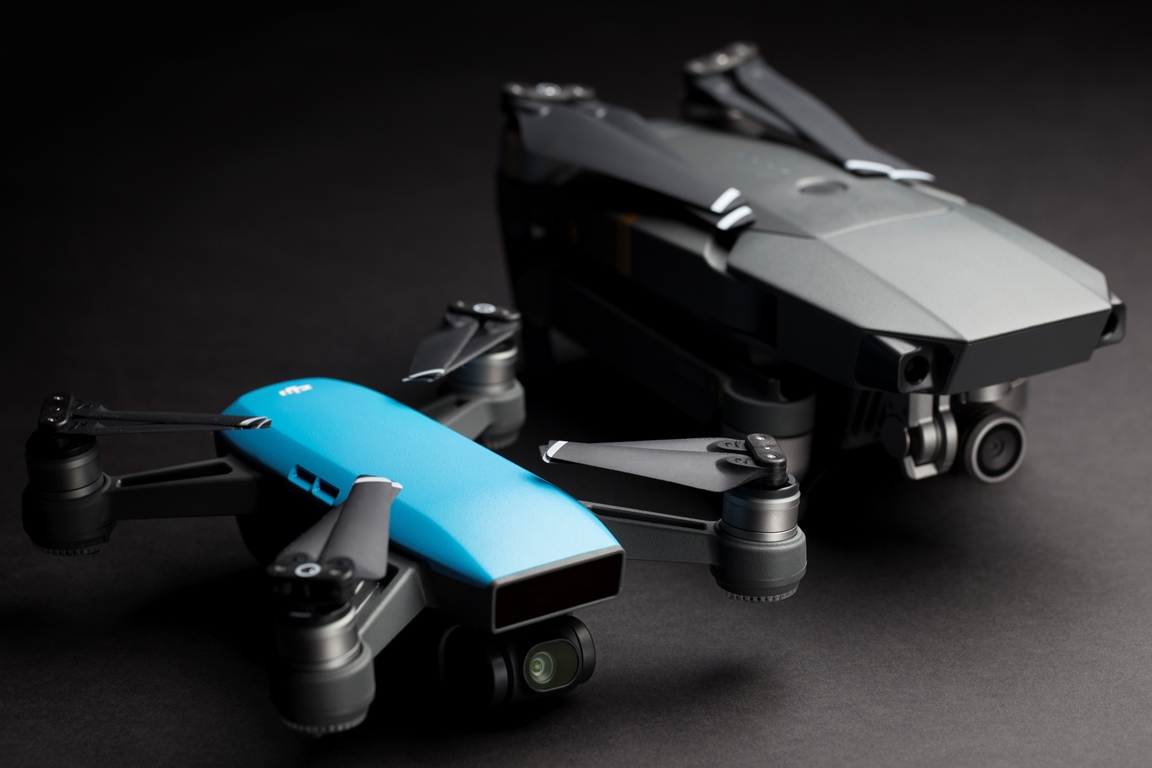
Both drones are designed to be portable and fit seamlessly into activities in a way few other drones can. Unlike the other members of the DJI lineup, these two can both easily be tucked away into a regular daypack with a variety of other items, without detracting from whatever else is going on.
The Mavic arms fold up, which leaves the compacted size at 3.3” x 3.3” x 7.8”, making for a nice and portable unit—about the size of a water bottle. While the Spark does not fold, the overall footprint is 2.2”x 5.6” x 5.6”, which is much shorter and has less depth than the Mavic and makes it overall more portable. Numbers really don’t do this Spark size justice, as the actual fuselage of the Spark is smaller than my Samsung Galaxy S7, and really quite amazing when you think of the advanced technology at play.
With regards to the weight, there isn’t much of a matchup here and the Spark takes the featherweight title. The Mavic has 1.62 lbs of body weight, (which is by no means chunky) but just can’t match the Spark, which just barely moves the scales at .66 lbs. From the physical perspective, the Spark clearly is the victor in the race to the bottom, but both are pretty conveniently-sized.
Camera resolution
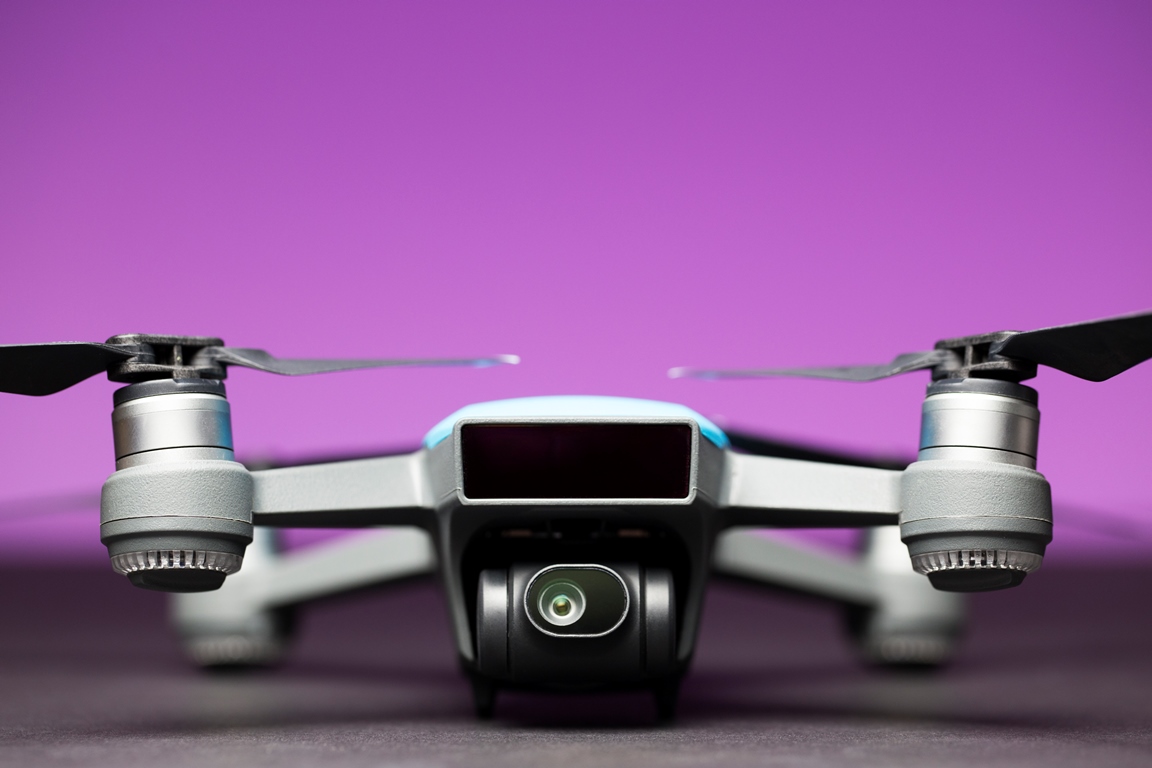
The Mavic comes out swinging with 4K video resolution, with a 1/2.3” CMOS sensor with 12.35MP (effective pixels), which produces a very impressive visual output. The Spark unfortunately does not have 4K, instead coming with 1080p and a 1/2.3” CMOS sensor that has 12MP (effective) stills.
The Mavic has a 78.8° FOV, 28mm lens, f/2.2 with 8s-1/8000s electronic shutter speed, while the Spark has a wider 81.9° FOV, 25mm lens f/2.6 with 2s-1/8000s electronic shutter speed.
While the still photo optics are only slightly different in resolution, both have primarily the same shooting modes, with only a couple new ones added for the Spark. ShallowFocus adjusts the depth of field to give the bokeh look, where the background is blurred out and the subject stays in focus. Pano, on the other hand, allows users to shoot vertical or horizontal panoramas for wide-angle shots.
In all honesty, the quality of the lower 1080p resolution is very good on the Spark, but since I would be looking for something that captures stunning visuals, I’m willing to give up a few degrees of FOV for the Mavic’s better specs.
Gimbal stabilization
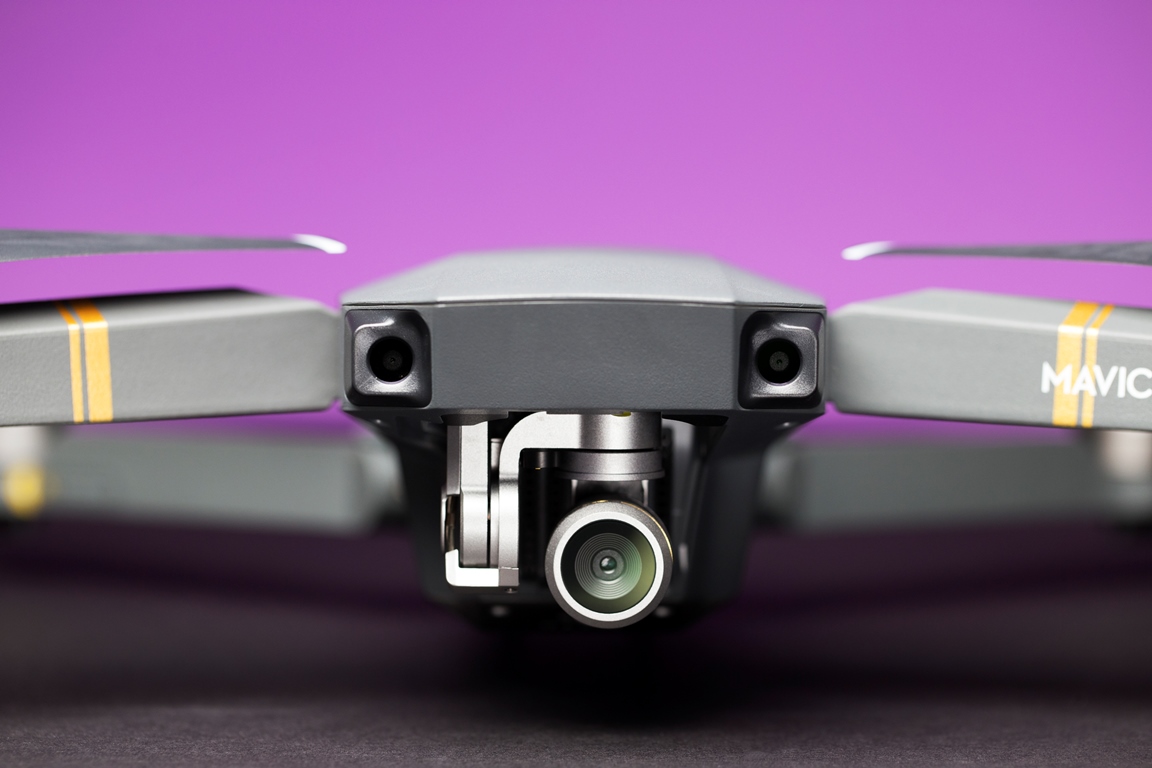
Gimbal stabilization was one was one of the big differences when the Spark was announced, and from my experience the Mavic’s 3-axis gimbal has done a great job of keeping footage steady even in mild wind gusts.
The Spark’s 2-axis mechanical gimbal, along with UltraSmooth technology, is used to reduce pitch and roll by image cropping to compensate for not having the extra axis of stabilization. That’s why the video resolution tops out at 30fps at 1080p. The Mavic on the other hand, can shoot at a higher frame rate (96fps for 1080p, 30fps for 4K) for an overall smoother video feed.
As a note for both models: reducing the gimbal speed can help preserve the cinematic quality of pan shots, and offers more control.
The difference in video stability is most noticeable with rapid changes in direction during flight. For someone who isn’t too concerned with Ultra-HD video or high grade footage this might not be too much of an issue. The Spark video quality is by no means poor, but a side-by-side comparison shows some areas where the Mavic reigns supreme.
Flight specs
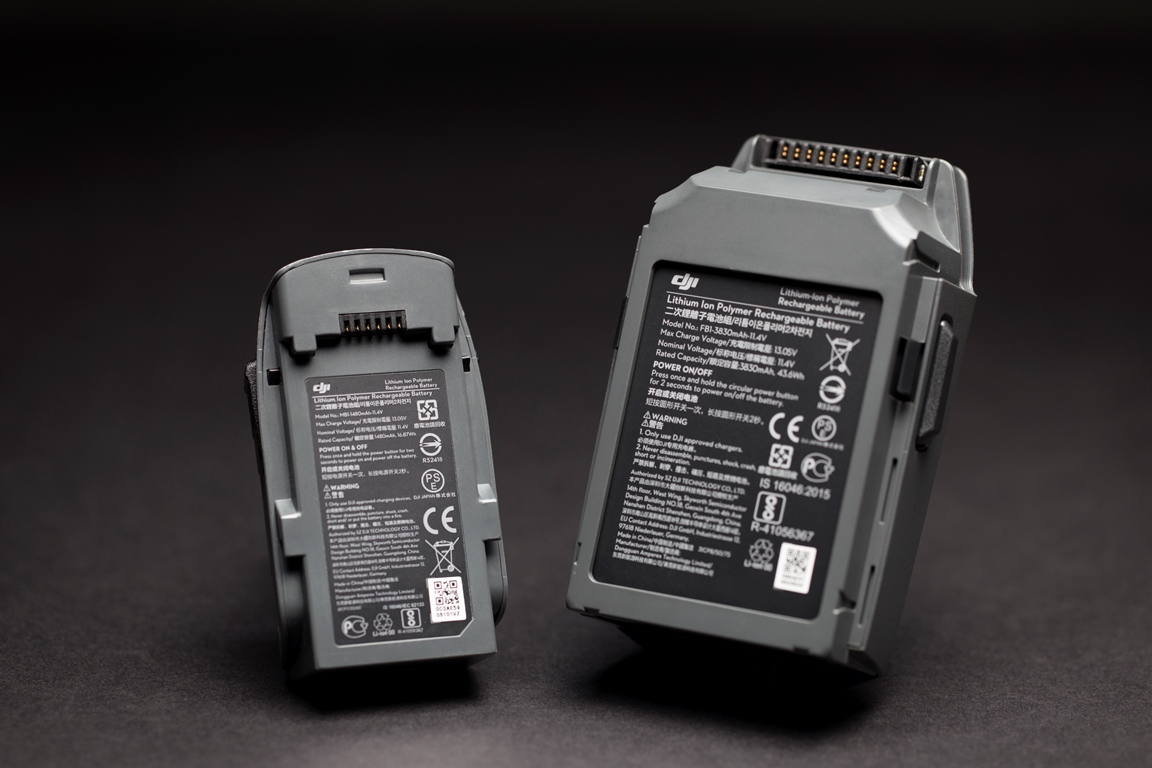
Battery life
The advertised flight time for the Mavic is 27 minutes on a full battery charge, and while I haven’t gotten quite there I have been reasonably close. For the Spark, DJI claims a 16-minute flight time. I have not yet hit this mark with the pre-production model we have, with most of my flights coming around 11 minutes or so.
Of course the battery life is dependent on a variety of factors like wind, speed, flight mode and so forth, so the actual flight time will vary.
I’m put off by the short battery life on the Spark, since it’s only about half as long as the Mavic. Of course with a reduction in size comes cuts to the power supply, so you are essentially balancing out what is more important to you: flight time or weight and cost.
The difference in flight time is understandable when you look at the batteries themselves. The Spark has a 1480 mAh battery, while the Mavic’s battery is over double that capacity at 3830 mAh. You pay dearly in weight (comparatively) for the power the Mavic battery is packing though, with about a .5lb overall heft, while the Spark battery weight is .2lbs
Range
This is an interesting topic, because the Spark can travel 1.2miles, if you opt for the remote. Without the remote however, using the DJI GO 4 app on Wi-Fi, the max transmission range is 80m in distance and 50m height.
Hands down the Mavic takes the lead here, with a max transmission range of 4.3 miles. Granted both are dependent on an unobstructed range and you should obey all flight regulations, but the difference in capabilities is very apparent.
Speed
The Mavic can hit up to 40 mph in Sport mode, with 16.4 ft/s ascent and 9.8 ft/s descent speed, which is a mere 5mph less than the Phantom 4 Pro. The Spark has a solid 31 mph max speed in Sport mode, with an equal ascent/descent max of 9.8 ft/s. Both are quite peppy, and the response time is solid when looking for control and maneuverability.
The Mavic out-performs the Spark here, but (for me) this is probably the least important arena when deciding which of the two is the better drone.
Controls
My biggest gripe about the Spark (besides the short battery life) is the lack of a transmitter in the $499 package (the Fly More package with the transmitter is $699). This leaves you with two options to control the drone: 1) with your phone in the DJI GO app, or 2) with PalmControl, which uses your upturned hand as a control input. The DJI GO app is a fantastic flight app, and gives you everything you could want during or post-flight. But that doesn’t make it a viable option to use the phone (or tablet) as a transmitter to accurately control an expensive quadcopter, in my humble opinion. There have been numerous times when I have tried to adjust the gimbal via the app mid-flight, only to have the phone erroneously pick up my finger as intending to control directionality, resulting in some jerky movement from the Spark. The lack of haptic feedback and overall feeling of reliable control is something that is a definite turn off for me.
Drone flight via a mobile device—while perhaps a convenient option for some—is less than ideal as the primary source of control. Unless you fork out an additional couple hundred dollars for the Fly More package, you’re stuck with it. The transmitter of the Spark isn’t the exact same as the Mavic, although it is very similar. The Mavic controller (which is more advanced than that of the Spark) adds an additional 316g to the weight comparison. It has an LCD screen, exposure wheel, and an additional customizable button, as well as another 45g over the Spark’s optional one.
The new PalmControl for the Spark includes the same photo queue that the Mavic has, but also has the Jedi-esque option to control flight directionality in a limited capacity by using your hand motions. The gesture control for the Spark does seem to work well enough to wow friends and colleagues for a brief moment and snap selfies, however it has limited practical use.
Flight modes
The Spark comes with the same baked-in flight modes that the Mavic has, which are by now very familiar to DJI fans, with a couple new additions. The new modes are Rocket, which ascends the drone while the camera is facing downward, Dronie, which flies backwards and upwards with the camera locked on the subject in frame, Circle, which completes a loop around the subject, and Helix, which spirals upwards around the subject in frame.
Final verdict: Mavic
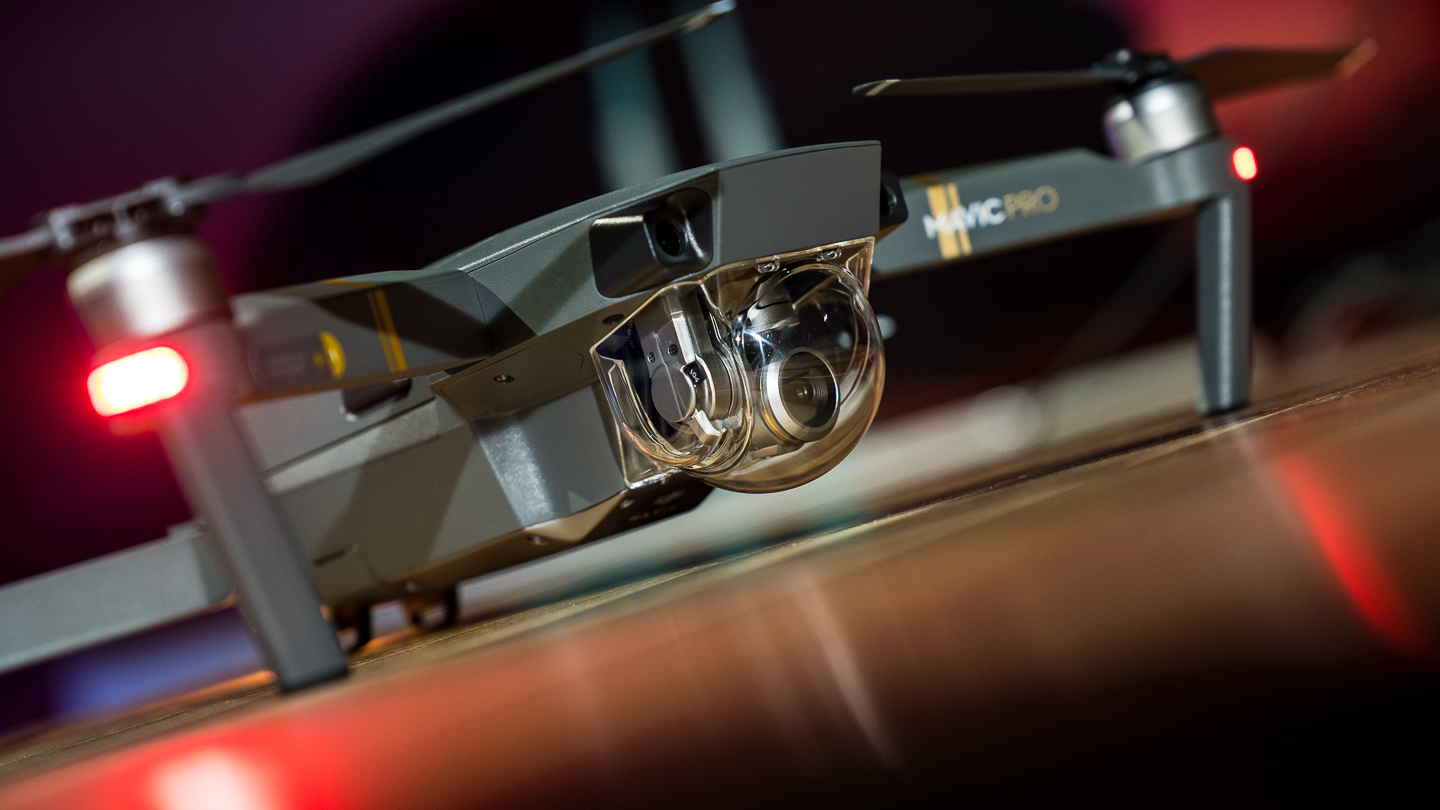
My personal preference out of the two is the Mavic by a landslide. With the remote included, the Spark is only $300 away from a more formidable drone for a higher-capacity use (although that is with two batteries).
I enjoy the longer flight time, the higher resolution, and the overall more complete drone experience that the Mavic offers. The size difference is personally not even a factor, since the Mavic itself is a very compact package and offers far greater flexibility than the Spark. While the Spark’s quality is still up to DJI standards, the target audience is not one I identify with. I think that the Spark would have been a much more viable option if it was $400 with the remote included.
However, if you are going to fall into the crowd that DJI primarily intends this to be used by, which is short flights, selfies or “dronies,” and you are looking for something to take out now and again without investing as much time or money into the hobby, the Spark is probably for you. There are people out there that don’t care so much about 4K, and just want to have fun with something new. For those users the Spark is probably a much more realistic investment, as $999 is no chump change.
The big question comes when you look to the future, and trying to figure out what the next DJI drone will look like. Will it be a Mavic Standard, a Spark PRO with upgraded features, or will it be another line altogether? We’ll just have to wait and see.

